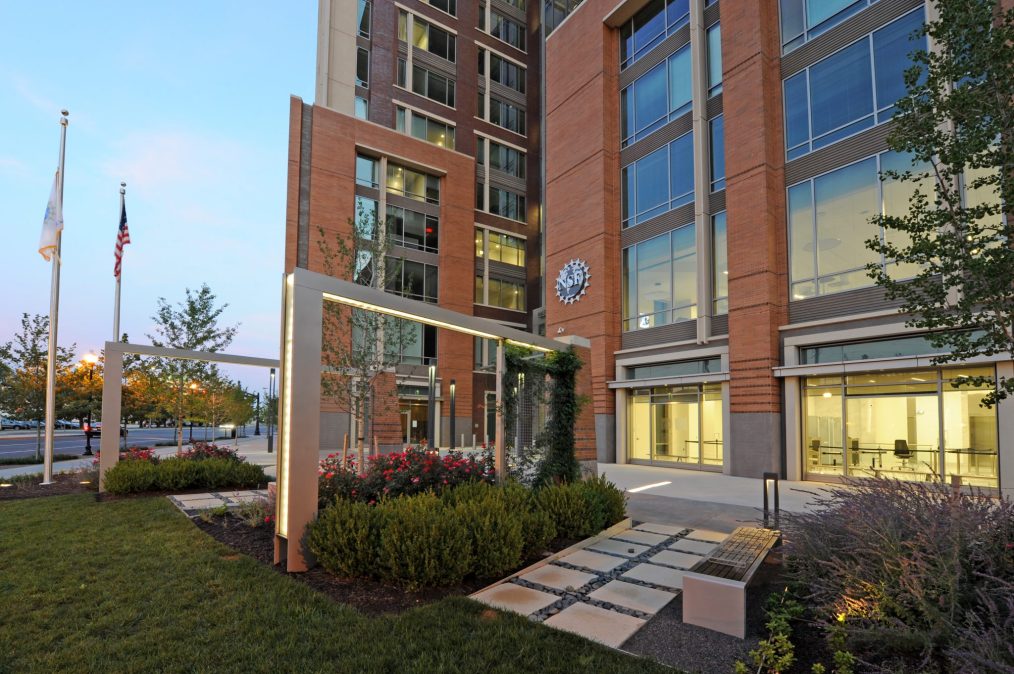NSF announces $75 million to create five biofoundries at research institutions

The National Science Foundation on Wednesday announced a $75 million award to support the creation of five “biofoundries” at academic institutions in a move it says will provide advancements in research and greater access to the resources needed to conduct that work.
Those five biofoundries, which are each focused on an unique area of biology and biotechnology research, are aimed at advancing biological and other sciences as well as making the tools needed to conduct that research accessible to a wider array of people. The biofoundries, for example, will provide access to resources like knowledge bases and cutting-edge technology needed “to ensure all ideas reach their potential,” according to an NSF press release. Those resources will also be free of charge.
“The new NSF BioFoundries will help democratize access to critical research infrastructure, helping to spur opportunities everywhere so innovation can happen anywhere,” NSF Director Sethuraman Panchanathan said. “Not only will these NSF BioFoundries advance biology, they also will lead to developments in artificial intelligence, data storage, health, climate resilience and more.”
Just two existing government facilities are currently doing the type of work that will be done at the new NSF biofoundries. One is at the Department of Energy and the other is at the Department of Commerce’s National Institute of Standards and Technology. The new facilities also support the Biden administration’s ongoing work to improve the bioeconomy, which was the subject of a 2022 executive order.
“Here in the BIO Directorate at the NSF, we like to say we’re using life to improve life,” Susan Marqusee, NSF’s assistant director for Biological Sciences and head of NSF’s Biological Sciences Directorate (BIO), said on a call with press Wednesday.
While the bioeconomy doesn’t have a uniform definition, Marqusee generally defined it as “harnessing biology to solve societal challenges.” She also noted that it’s growing. “There are estimates that by the year 2030 the bio economy is going to contribute 1 million jobs to the U.S. economy, and that’s only five years away from where we are today,” Marqusee said.
A biofoundry serves as a proving ground for an idea, Sridhar Raghavachari, NSF’s program officer for Biological Centers, Facilities, and Additional Research Infrastructure Cluster, said during the call.
“Biofoundries provide a way to de facto standardize some of these techniques, technologies, workflows, processes that can then be translated in an industrial scale,” Raghavachari said.
For example, one of the biofoundries announced Wednesday is led by the University of Pennsylvania and the University of Puerto Rico and will focus on RNA molecule and delivery vehicle development.
RNA — or messenger RNA known as mRNA — came to prominence in recent years as it was used in vaccinations for COVID-19. If a researcher has an idea using RNA delivery to biologically manipulate cells, Raghavachari said they might use AI to develop the RNA structures, then develop packaging methods, and then go and test the capabilities of that creation. That’s where a biofoundry like the NSF Artificial Intelligence-driven RNA BioFoundry comes in.
“The RNA biofoundry will provide, for instance, an end-to-end capability where researchers from pretty much anywhere in the country — again, from small institutions to large institutions — can come in and work with … our biofoundry to validate these,” Raghavachari said.
In addition to the RNA biofoundry, the other four new facilities are:
- NSF BioFoundry: Glycoscience Resources, Education, and Training: Will be led by the University of Georgia and focus on developing technologies with “using proteins with sugar chains and the enzymes that make them.” According to NSF, that could lead to advances in biotherapeutics and biofuels, among other areas.
- NSF iBioFoundry at the University of Illinois Urbana-Champaign: Will develop a biofoundry that’s remotely accessible and “integrates synthetic biology, AI and machine learning, and laboratory automation,” NSF said. The science focus of that biofoundry will be protein and cellular engineering.
- NSF BioFoundry for Extreme & Exceptional Fungi, Archaea and Bacteria: Will be led by UC-Santa Barbara, UC-Riverside and Cal Poly-Pomona and zero in on “organisms that can live and thrive in extreme environments, with a particular focus on microorganisms that contribute to biotechnology development.” According to NSF, the goal of this biofoundry is to “create a library of microbes that reveals new rules of life” and for those microbes to advance areas of the bioeconomy.
- NSF Center for Robust, Equitable and Accessible Technology and Education for Next Generation BioFoundries: Will be led by University of Delaware and is focused on developing automation and design tools for a type of testing known as “high-throughput” that yield multiple tests at once. It will also work on the “construction of metabolic pathways, protein materials, biosensors and bacteriophage products and will democratize access to the tools of modern biotechnology,” NSF said.



